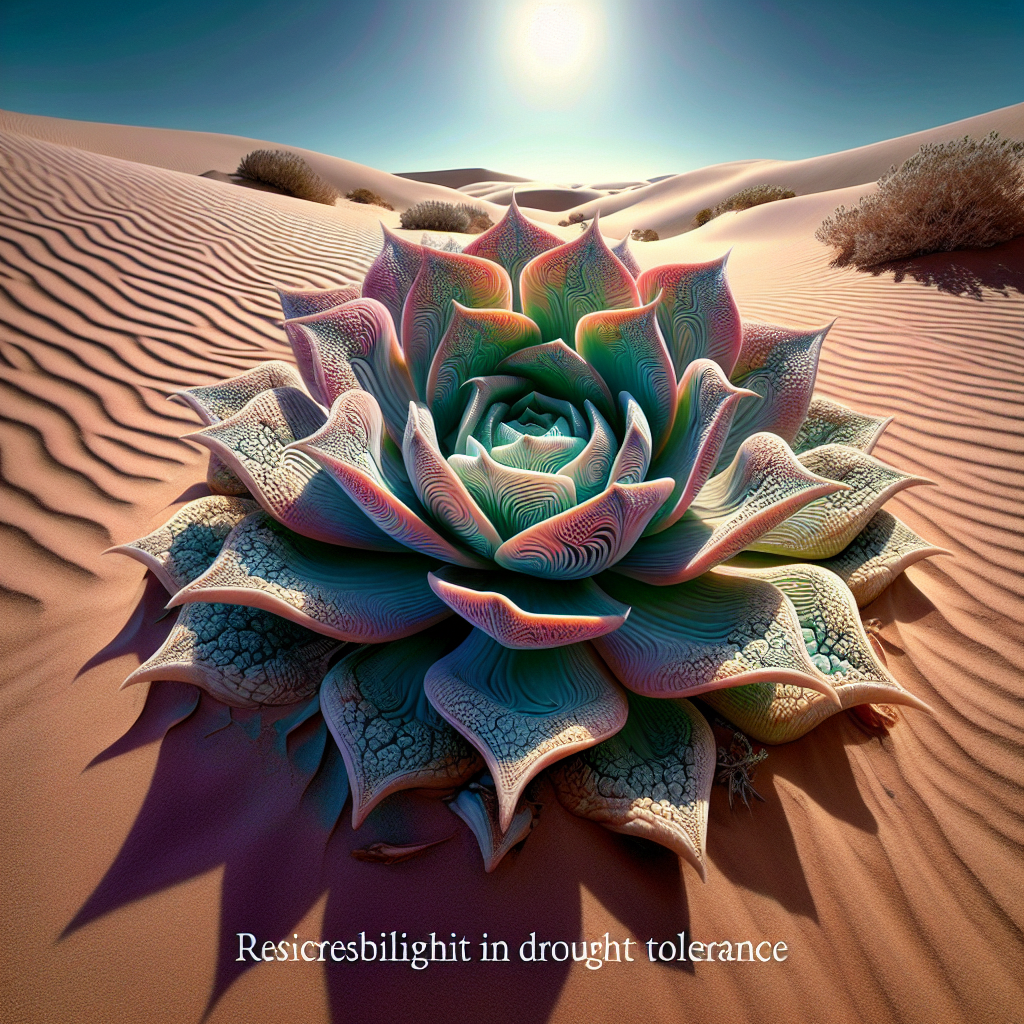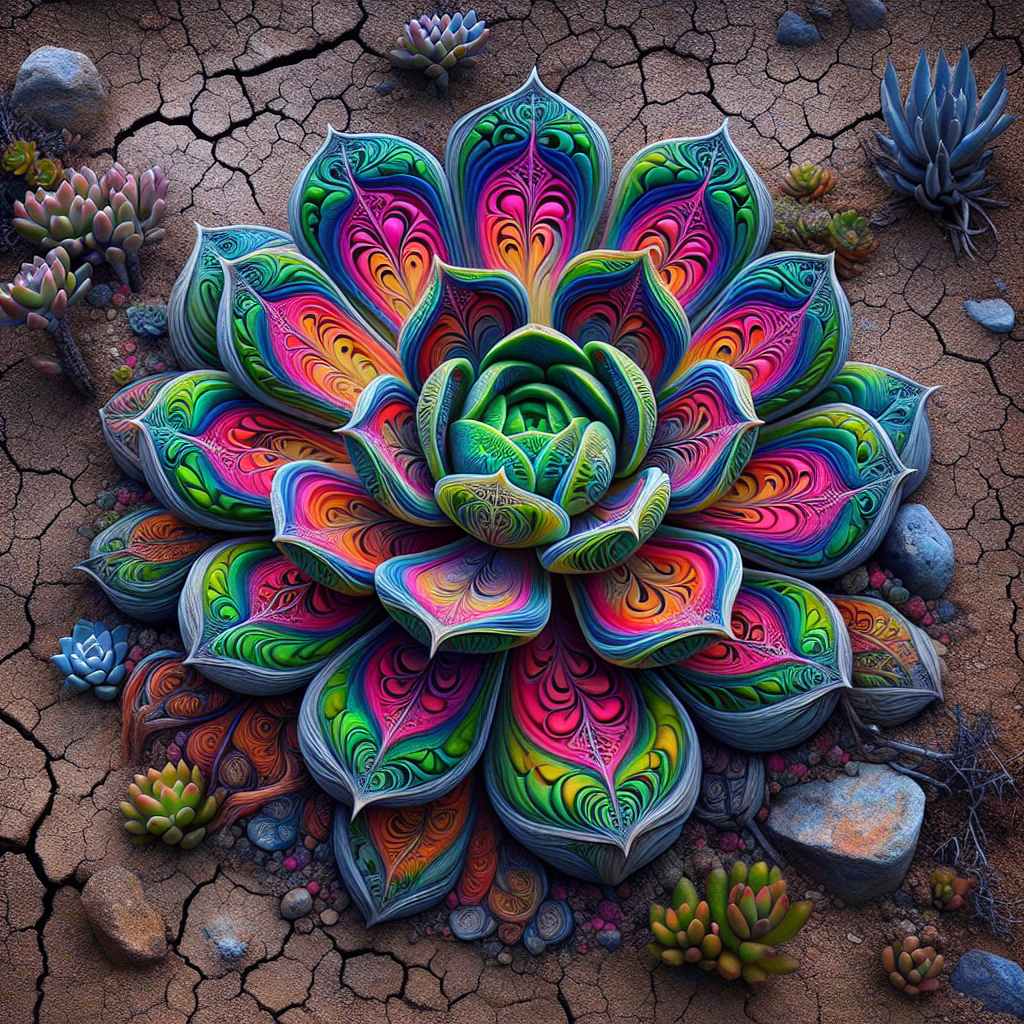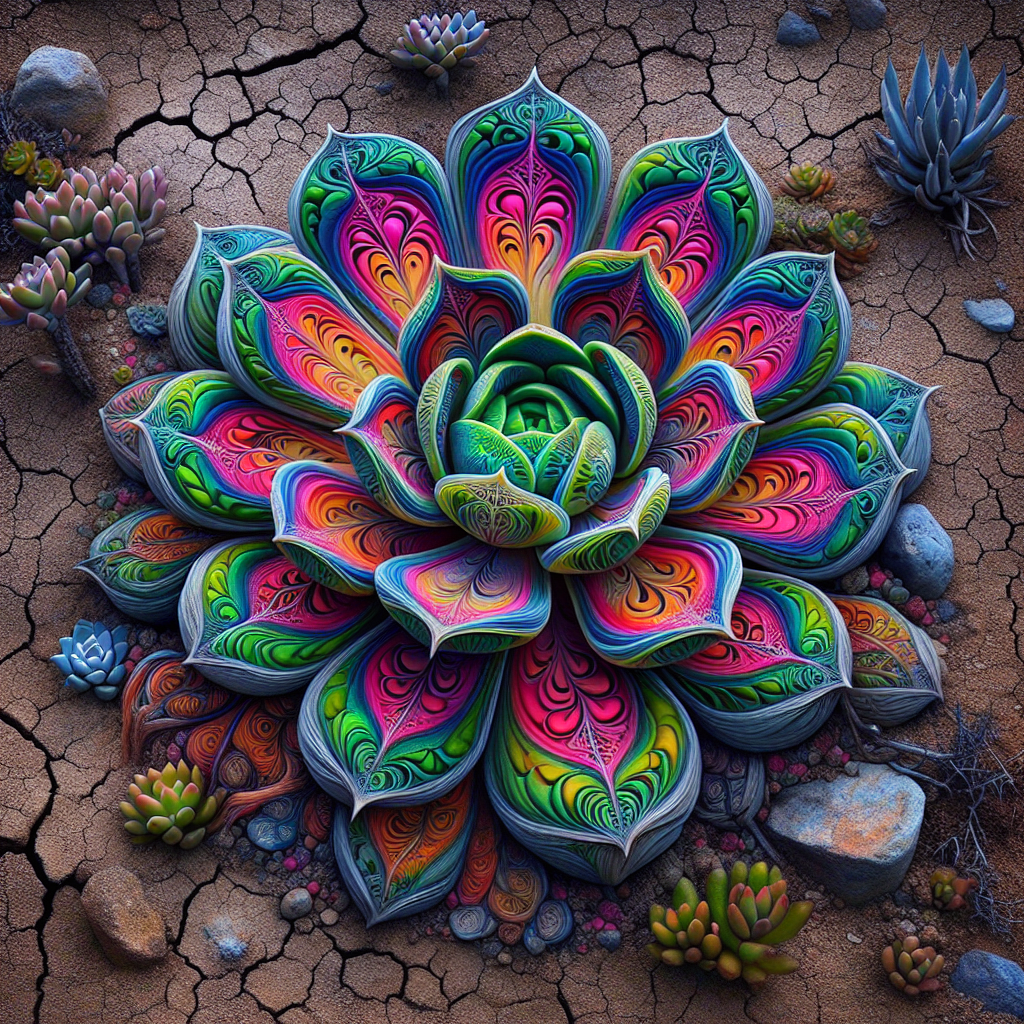Imagine having a picturesque garden that thrives even during periods of dry spells and water restrictions. In this article, you will discover a variety of plants and practices that can help you create a stunning drought-tolerant garden. From vibrant succulents to native grasses, you will find an array of options to ensure your garden remains lush and green, even in the face of water scarcity. With simple yet effective practices, you will learn how to conserve water and maintain a beautiful garden that not only survives but thrives in challenging conditions. Let’s embark on this journey towards a drought-tolerant oasis together!
Choosing Drought-Tolerant Plants
When it comes to creating a drought-tolerant garden, selecting the right plants is key. By choosing plants that are naturally adapted to thrive in arid conditions, you can reduce water usage and still enjoy a beautiful and vibrant garden. One of the best ways to start is by researching native plant species. Native plants are well-suited to the local climate and soil conditions, making them naturally drought-tolerant. They have evolved over time to survive with minimal water, making them a perfect choice for a water-wise garden.
Another option to consider is incorporating succulents and cacti into your garden. These plants have unique adaptations that allow them to store water in their leaves, stems, or roots. They are excellent at surviving in low-water conditions and can add interesting textures and shapes to your outdoor space. Additionally, Mediterranean plants are a great choice for a drought-tolerant garden. With their origins in dry and hot climates, they have developed strategies to conserve water and thrive in harsh conditions. These plants often feature beautiful flowers and fragrant foliage, offering both visual and sensory appeal.
To further enhance the resilience of your garden, consider selecting plants that are suitable for xeriscaping. Xeriscaping is a landscaping technique that focuses on using low-water plants and efficient irrigation methods. Look for plants that have low water needs, such as lavender, yarrow, agave, and ornamental grasses. By choosing these drought-tolerant plants, you can create a stunning garden that will thrive even during drought periods.
Understanding Water-Wise Practices
In addition to selecting the right plants, it’s crucial to understand and implement water-wise practices in your garden. These practices can greatly reduce water usage and still maintain a vibrant and healthy landscape.
One important aspect to consider is improving soil quality. Well-draining soil is essential for drought-tolerant plants as it allows excess water to flow away and prevents waterlogging. You can improve soil quality by incorporating organic matter such as compost, which helps retain moisture without becoming waterlogged.
Efficient irrigation techniques are also crucial in a drought-tolerant garden. Drip irrigation systems are highly recommended as they deliver water directly to the roots, minimizing evaporation and water wastage. Another effective technique is using mulch to conserve moisture. Apply a layer of organic mulch around your plants to prevent water evaporation from the soil and suppress weed growth. This will help your plants retain moisture and reduce the need for frequent watering.
Rainwater harvesting systems are another excellent water-wise practice to consider. By collecting rainwater, you can use it to irrigate your garden during dry periods, reducing the need for tap water. You can install rain barrels or larger tanks to capture rainwater from your roof and store it for future use. This sustainable practice not only conserves water but also allows you to take advantage of a free and natural resource.

Preparing the Garden
Before planting your drought-tolerant garden, it’s essential to prepare the space to ensure optimal conditions for your plants. Start by assessing the sunlight and soil conditions in your garden. Most drought-tolerant plants thrive in full sun, so make sure the areas you have in mind receive adequate sunlight throughout the day. Additionally, check the soil drainage and pH levels. Drought-tolerant plants typically prefer well-draining soil with a slightly acidic to neutral pH.
To accurately measure moisture levels in your soil, use a soil moisture meter or rely on your senses. Lightly squeeze a handful of soil to see if it holds together or crumbles easily. If it retains its shape and feels moist, it might not be suitable for drought-tolerant plants. In such cases, amending the soil can help improve water retention. Mixing organic matter like compost or peat moss into the soil can enhance its ability to hold onto moisture, ensuring your plants have access to the water they need.
Before planting your drought-tolerant garden, it’s important to remove any non-drought-tolerant plants present in the area. These plants may not only compete for water but could potentially increase the risk of disease or pests. Clearing the area of non-drought-tolerant plants will create a blank canvas for you to design and plant your water-wise garden.
Planting and Establishing Drought-Tolerant Plants
Now that you have prepared your garden, it’s time to start planting your selected drought-tolerant plants. Dig holes wide enough to accommodate the root system of each plant and space them according to their mature size. Providing sufficient room for growth ensures that the plants can access the necessary nutrients and water without competing with each other.
Creating mounds or basins around the base of your plants can be beneficial, especially during the establishment period. These features help direct water towards the plant’s roots, allowing them to absorb moisture more efficiently. Mounds or basins also form a barrier to prevent runoff and can improve water retention in the soil.
During the establishment period, it’s important to provide adequate water and care for your newly planted drought-tolerant plants. Although these plants are adapted to withstand drought conditions, they still require some watering to establish their roots. Frequent, light watering is recommended until the plants become established, after which they can rely on their own water-saving mechanisms.
To further support the growth and health of your drought-tolerant plants, consider applying organic fertilizers and compost. These natural amendments provide essential nutrients and enhance soil quality without potentially harming the environment. By nourishing the soil, you can promote the overall resilience and longevity of your garden.

Maintaining a Drought-Tolerant Garden
Like any garden, a drought-tolerant landscape requires regular maintenance to keep it looking its best. Proper pruning and thinning are essential to ensure the health and vitality of your plants. Remove any dead, damaged, or overgrown plant parts to encourage new growth and maintain a tidy appearance. Pruning also helps improve air circulation, which can prevent diseases in your garden.
Weed control is another important aspect of maintaining a drought-tolerant garden. Weeds compete with your plants for water and nutrients, so it’s essential to keep them under control. Regularly inspect your garden for any unwanted growth and remove weeds promptly. Mulching with organic material like wood chips or straw can also help suppress weed growth.
Monitoring and adjusting irrigation is crucial to prevent overwatering and optimize water usage. Keep an eye on the soil moisture levels and adjust your watering schedule accordingly. It’s better to water deeply and infrequently, allowing the water to penetrate the soil and reach the roots more effectively. Periodically check the performance of your irrigation system and make any necessary repairs or adjustments to ensure water efficiency.
Implementing water-saving techniques in your garden can further conserve water. For example, consider using a rain sensor or moisture sensor to prevent unnecessary irrigation during rainy periods or when the soil is still adequately moist. You can also group plants with similar water needs together, enabling more efficient watering and preventing water wastage.
Conserving Water in the Garden
Conserving water in your garden is a critical aspect of creating a drought-tolerant landscape. Several strategies and techniques can help minimize water usage while still maintaining a visually appealing and thriving garden.
Using drip irrigation systems is an excellent way to conserve water and deliver precise amounts directly to the roots of your plants. Unlike traditional sprinkler systems, which can lead to water wastage through evaporation and runoff, drip irrigation systems target the base of the plants, reducing water loss. This water-saving method is particularly effective for drought-tolerant plants that require less frequent but deep watering.
Installing smart irrigation controllers can also contribute to water conservation. These controllers use weather data and advanced technology to adjust watering schedules based on specific conditions. By automatically adapting to the weather, these controllers prevent overwatering and ensure that your plants receive the optimal amount of water.
Practicing water-saving techniques in your garden can make a significant difference in water conservation. For example, avoid watering during the hottest part of the day when evaporation rates are high. Instead, aim to water early in the morning or late in the afternoon when temperatures are cooler, allowing the water to penetrate deeply into the soil.
Reducing the size of lawn areas can drastically decrease water usage in your garden. Consider replacing some sections of your lawn with drought-tolerant plants or hardscaping features. This not only saves water but also creates diverse and visually appealing landscaping elements.
Attracting Beneficial Insects and Wildlife
Creating a drought-tolerant garden doesn’t mean sacrificing biodiversity and ecological value. By choosing pollinator-friendly plants, you can attract beneficial insects and wildlife to your garden. Bees, butterflies, and other pollinators are essential for plant reproduction and the overall health of ecosystems. By providing nectar-rich flowers and appropriate habitat, you can support these important pollinators while enjoying a vibrant and blooming garden.
Creating habitat and shelter areas within your garden is crucial for attracting wildlife. Incorporate features such as birdhouses, butterfly houses, or small ponds to provide refuge for animals. Native plants also play a critical role in attracting wildlife, as they provide a familiar food source and habitat for local species. Including a variety of plants with different blooming seasons can ensure a continuous food supply for pollinators and other wildlife.
To further support wildlife, provide water sources such as birdbaths or shallow dishes filled with clean water. This will not only attract birds and other wildlife but also allow them to stay hydrated during dry periods. Avoid using harmful pesticides in your garden, as these chemicals can disrupt the balance of the ecosystem and harm beneficial insects.
Creating Drought-Tolerant Landscaping Features
Enhance the aesthetics of your drought-tolerant garden by incorporating design features that are both visually appealing and water-wise. Rock gardens offer a low-maintenance and drought-tolerant option, as they often feature plants that thrive in rocky, well-draining soil. The natural beauty of rocks and boulders combined with carefully chosen plants can create a striking focal point in your garden.
Dry creek beds are another landscaping feature that adds both functionality and visual interest. These decorative channels mimic natural waterways and can help manage excess water during heavy rainfall or irrigation. By using stones and gravel to create a dry creek bed, you can incorporate an attractive and practical element into your garden while minimizing water usage.
If you desire a lawn-like appearance without the water requirements, consider installing artificial turf. Synthetic grass provides a green and lush surface all year round, without the need for irrigation or mowing. Additionally, it eliminates the need for chemical fertilizers and weed control, making it an environmentally friendly choice.
Incorporating decorative gravel into your garden design can add texture and visual contrast. Gravel is an excellent alternative to traditional ground coverings and can help conserve moisture in the soil. It also reduces weed growth and provides a neat and clean aesthetic to your outdoor space.
Incorporating Sustainable Garden Design
Sustainable garden design goes hand in hand with creating a drought-tolerant landscape. Consider using permeable paving materials for your walkways and patio areas. Permeable surfaces allow rainwater to soak into the ground instead of running off into storm drains, promoting groundwater recharge and reducing the burden on municipal water systems.
Implementing vertical gardening techniques can also maximize space and water efficiency in your garden. Vertical gardens utilize vertical wall structures or trellises to grow plants vertically, saving space and minimizing water usage. These gardens can be particularly useful in small areas or when creating living walls.
Designing rain gardens is another sustainable practice that combines beauty and functionality. Rain gardens are designed to capture and absorb rainwater runoff from roofs, sidewalks, and other impermeable surfaces. They feature a variety of drought-tolerant plants that can tolerate both wet and dry periods, creating a visually appealing and eco-friendly landscaping solution.
Utilizing native landscaping principles in your garden is essential for sustainability and water conservation. Native plants are adapted to local climates and require less water, fertilizer, and maintenance. They also support native wildlife and contribute to the preservation of biodiversity. By incorporating native plants into your landscape, you can create a vibrant and resilient garden that benefits both the environment and your outdoor space.
Educating and Sharing Ideas
Continuing education and community involvement are essential for expanding your knowledge and skills in drought-tolerant gardening. Participating in community gardens allows you to collaborate with fellow gardeners, exchange ideas, and learn from each other’s experiences. Community gardens also provide opportunities to grow food and connect with nature, fostering a sense of community and wellbeing.
Attending gardening workshops is another excellent way to expand your understanding of drought-tolerant gardening. These workshops often feature expert speakers who share valuable insights and practical tips. You can learn about a range of topics, including plant selection, water-wise practices, and sustainable gardening techniques.
Joining online gardening forums and communities is a convenient way to engage with a broader gardening community and gain insights from fellow enthusiasts. These platforms provide a space to ask questions, share experiences, and exchange ideas with gardeners from around the world. Online gardening forums are also an excellent source of inspiration, as members often share photos of their drought-tolerant gardens and discuss their favorite plants and practices.
By actively participating in these educational opportunities and sharing your own experiences and tips, you contribute to a collective knowledge base and inspire others to embark on the journey of creating a drought-tolerant garden. Together, we can create beautiful and sustainable outdoor spaces that conserve water and support the environment.

